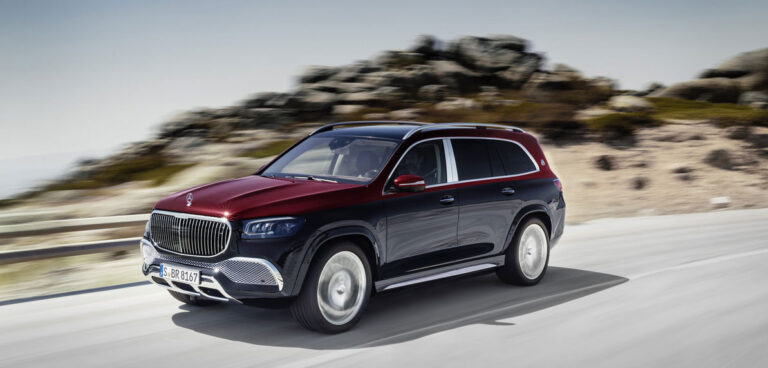The team at Mercedes-Maybach has introduced its new GLS 600 SUV. Equipped with Mercedes’ M 177 powertrain system, the GLS 600 benefits from EQ Boost technology and will generate up to 500ps and 730Nm of torque.
Developed exclusively for the GLS 600, the 3,982cc biturbo engine is combined with the 48V EQ Boost on-board electrical system and integrated starter-alternator (ISG). The ISG is responsible for hybrid functions such as EQ Boost or energy recovery, while allowing fuel saving.
While powertrain development focused on consumption and emissions improvements, the V8 engine was designed to ensure power expectations are met. As a result, an additional 250Nm of torque and up to 21ps output are available temporarily via EQ Boost. Power is transmitted by the 9G-Tronic automatic transmission.
A wide spread of ratios for gears one to nine ensures a significant reduction in engine speed, ensuring a high level of drive and ride comfort. The GLS 600 also features a transfer case with variable transfer of the drive torque from 0-100% between the axles.
Configured for comfort, efficiency and effective emissions reduction, the turbocharged engine includes cylinder shut-off technology in the 800-3,250rpm speed range. The variable valve control system shuts off four cylinders at once.
This reduces gas exchange losses while improving the overall efficiency of the remaining four cylinders in combustion mode by shifting the operating point toward higher loads.
The two zirconium alloy cylinder heads on the Mercedes-Maybach unit have a particularly high thermal resistance and are thermally conductive. The intake and exhaust ducts form the tumble – the movement of the air mass during cylinder charging – for particularly efficient and low-emission mixture formation and combustion.
A third-generation spray-guided direct gasoline injection system with piezo injectors also ensures multiple injections as needed between 100 bar and 200 bar. The two twin-scroll turbochargers are positioned in the ‘V’ between the cylinder banks to save space. Their boost pressure is adapted to the demand in real time by a control valve. These measures are intertwined and improve thermal efficiency and emissions.


